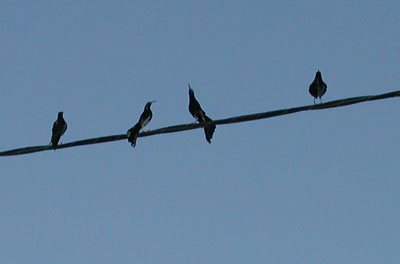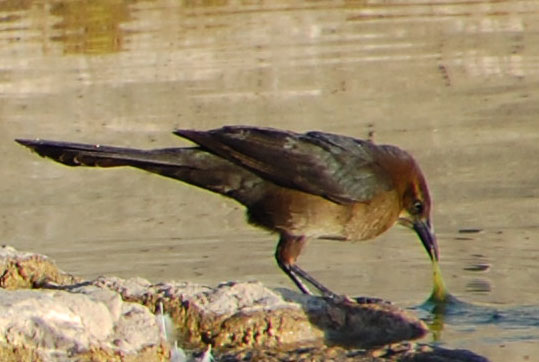Great-Tailed Grackle
Quiscalus mexicanus

Photographed in Phoenix along the Arizona Canal near 40th Street and Camelback Road. February 2009.
Sponsored Links:

Utility wire serving as a lek spot for four males.
Great-tailed Grackles are partial to water and so without the expanses of watered landscapes and agricultural fields these birds would be rare in the Sonoran Desert. One common foraging tactic they use is to catch worms and bugs that are forced out of the soil during irrigation. But these are very adaptable birds that can adjust their tactics to take advantage of human-altered habitat. For example, at dawn every day they gather to feed on grasshoppers and other insects beneath parking area and billboard flood lights. Garbage cans and scraps from outside restaurant areas are another important food source for urban grackles. Dairy cattle feed lots attract hundreds if not thousands of these blackbirds.

Watching this female Great-tailed Grackle feed in central Phoenix, it seemed to be removing invertebrates from the filamentous algae, but not injesting the algae.
Male grackles begin forming leks even when mating season is weeks away. Leks often start in an open grassy area when two or more males begin strutting about, eyeing their rivals, and holding their beak-tips as high up as possible. The more the merrier. Groups of six or more jet-black males dance about all with an eye out for each other and any brown females that might be noticing. For human observers it can be entertaining. But for these birds this test of genetic fitness determines which male a female chooses. Loosers are left out of the next generation.